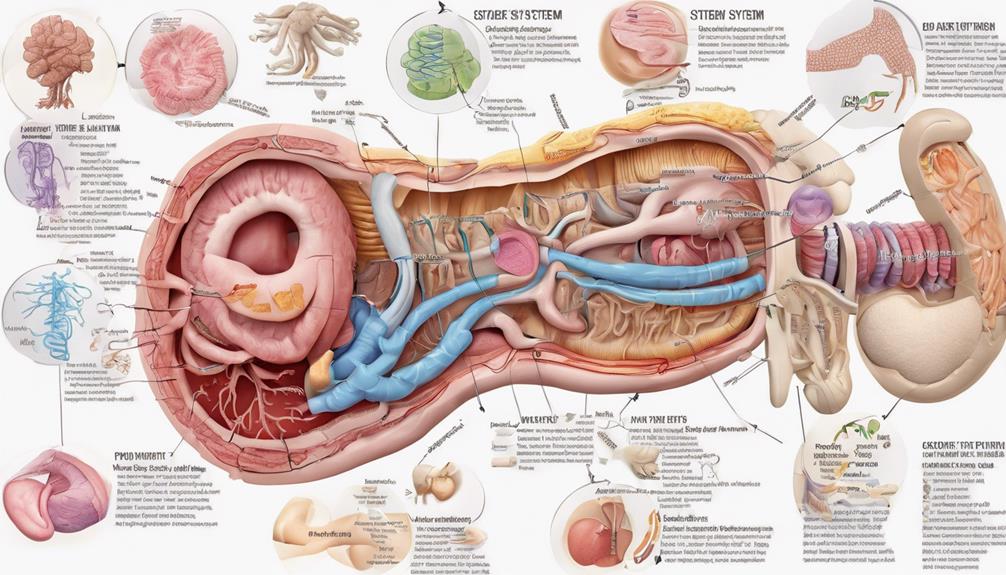Navigating through the myriad of standard tube feeding formulas can be likened to searching for the ideal puzzle piece among countless possibilities. Every component must align perfectly to fulfill the objective of optimal nutritional delivery. With factors like caloric density and the balance of nutrients, each aspect is key in determining the formula’s efficacy.
But what truly sets a formula apart? Let's uncover the key components that make a standard tube feeding formula not just good, but exceptional in meeting patients' diverse needs and enhancing their overall well-being.
Key Takeaways
- Balanced nutrient profile crucial for efficacy.
- Higher caloric densities aid restricted intake.
- Quality ingredients optimize absorption and utilization.
- Disease-specific formulas tailor to unique needs.
Nutrient Composition
When formulating effective tube feeding formulas, it's important to carefully consider the nutrient composition to meet patients' specific dietary requirements. Standard formulas are meticulously designed to provide a balanced nutrient profile that supports the best nutrition for individuals relying on tube feeding. These formulas typically contain 1-2 kcal/mL, with specific energy-to-nitrogen ratios to ensure efficient utilization of nutrients. Protein sources such as casein, whey protein, and egg are included in standard formulas to meet patients' protein needs adequately. Additionally, fat sources like corn, soy, and fish oil are incorporated to provide essential fatty acids necessary for overall health.
Micronutrient content in standard formulas plays a critical role in meeting patients' vitamin and mineral requirements. By carefully formulating the nutrient composition of these formulas, healthcare providers can make sure that patients receive the necessary nutrients to support their well-being. The emphasis on a balanced nutrient profile in tube feeding formulas underscores the importance of meeting patients' nutritional needs effectively and efficiently.
Caloric Density

Considering the nutrient composition of tube feeding formulas, the caloric density plays a significant role in tailoring nutritional support to meet individual patient requirements efficiently.
- Optimizing Caloric Intake: Standard tube feeding formulas usually provide 1 calorie per 1 mL, ensuring a consistent caloric intake. This helps in meeting the patient's energy needs effectively.
- Meeting Volume Restrictions: Some formulas offer higher caloric densities ranging from 1.2 to 2.0 calories per mL. This higher caloric density is beneficial for patients with volume restrictions, allowing them to receive essential nutrients without exceeding fluid limitations.
- Efficient Energy Delivery: Higher caloric density formulas are particularly useful for overnight or bolus feedings. By delivering more calories in less volume, these formulas help in meeting energy goals efficiently and supporting the nutritional requirements of individuals on tube feeding regimens.
Adjusting caloric density based on individual patient requirements is key to optimizing nutritional support and ensuring patient tolerances are met.
Ingredient Quality
High-quality ingredients are fundamental in ensuring the efficacy and nutritional adequacy of tube feeding formulas for patients. Standard formulas rely on the use of high-quality ingredients to deliver essential nutrients that align with recommended daily intakes of macro and micronutrients. By prioritizing ingredient quality, these formulas promote proper absorption and efficient utilization of nutrients in the body, ultimately supporting patient health and aiding in the recovery process.
The careful selection of premium ingredients in standard tube feeding formulas enhances their effectiveness by providing a well-balanced nutritional profile. Ingredient quality plays an essential role in the overall success of tube feeding formulas, as it directly impacts the ability of patients to receive the necessary nutrients for their well-being.
Ensuring the use of high-quality ingredients is paramount in formulating effective standard tube feeding formulas that cater to the diverse nutritional needs of patients undergoing tube feeding.
Digestibility Factors

Optimizing the digestibility of tube feeding formulas is essential for ensuring efficient nutrient absorption and minimizing complications during enteral nutrition support. When considering the digestibility factors of tube feeding formulas, several key points should be taken into account:
- Protein Type: The choice between intact protein in polymeric formulas or hydrolyzed protein in peptide-based formulas can impact the ease of digestion and absorption of essential amino acids, important for patients with high clinical nutritional needs.
- Fiber Content: Balancing the levels of soluble and insoluble fiber in tube feeding formulas is important to maintain ideal bowel function and reduce the risk of tube clogging, especially in patients at high risk of complications.
- Formula Composition: Whether a formula is polymeric, peptide-based, or modular can significantly influence its digestibility and subsequent nutrient absorption, making it important to select the most suitable formula based on individual patient needs.
Considering these factors is paramount in selecting a tube feeding formula that supports effective nutrient absorption and overall clinical outcomes for patients requiring enteral nutrition support.
Disease-specific Formulations
Disease-specific tube feeding formulations are customized to address the unique nutritional requirements of patients with specific medical conditions. These conditions include diabetes, hepatic disease, and chronic kidney disease. These specialized formulas aim to tackle metabolic abnormalities, support organ function, and enhance clinical outcomes through tailored macronutrient compositions, adjusted fiber content, and targeted micronutrient levels.
By providing vital nutritional support, disease-specific tube feeding formulas play an important role in disease management. For instance, formulations for hyperglycemia management, hepatic encephalopathy prevention, and renal function support are designed to meet the challenges posed by these conditions. Utilizing these tailored formulas not only improves patient tolerance but also aids in better nutrient absorption, potentially contributing to enhanced disease management and overall health outcomes.
Incorporating disease-specific tube feeding formulas into patient care plans can lead to improved clinical results and better quality of life for individuals dealing with complex medical conditions.
Frequently Asked Questions
What Is Standard Tube Feeding Formula?
Standard tube feeding formula is a balanced nutritional option providing 1 calorie per 1 mL. It caters to general dietary needs, containing protein, fat, and carbohydrates.
This versatile formula adapts to various feeding methods based on patient requirements. Commonly used for individuals without specific dietary needs, it serves as a foundational choice for enteral nutrition.
What Are the Factors Influencing the Selection of Enteral Feeding Formulas?
When selecting enteral feeding formulas, factors like the patient's nutritional needs, digestive system function, and tube end location must be considered. Energy-to-nitrogen ratios, protein sources, and fat content play a crucial role in choosing the right formula for top-notch nutrition.
Commercial options cater to specific conditions, while homemade formulas offer cost-effective alternatives. Nutrient levels are compared to ASPEN and ESPEN recommendations to guarantee adequacy, with micronutrient and antioxidant content also influencing formula selection.
How Do Children's Enteral Formulas Differ From Adult Formulas?
Children's enteral formulas differ from adult formulas by tailoring nutrient content to meet the unique needs of growing bodies. They offer higher caloric density to support increased energy requirements during growth and development. Specific vitamins and minerals are provided at levels suitable for children to guarantee ideal growth.
Adjusted fiber content promotes healthy digestion and bowel regularity. Flavor profiles are designed to appeal to younger patients, encouraging better compliance with feeding regimens.
What Are the Factors Which We Should Consider Regarding the Tube Feeding?
When considering tube feeding, we must assess caloric density, osmolality, fiber content, and formula composition. These factors play a critical role in ensuring best nutrient intake, preventing tolerance issues, regulating bowel function, and meeting individual patient needs.
Dilution should be avoided to maintain nutrient concentrations. Proper evaluation and selection of tube feeding formulas are essential for effective nutritional support and patient well-being.
Conclusion
To select an effective tube feeding formula is vital for ideal patient nutrition. While some may argue that higher caloric densities can be overwhelming for certain individuals, it's important to take into account the benefits for patients with volume restrictions.
By choosing formulas with appropriate caloric density, osmolality, and fiber content, healthcare providers can guarantee smooth enteral nutrition delivery and support overall patient well-being. Trust in the science behind these formula choices for improved patient outcomes.










